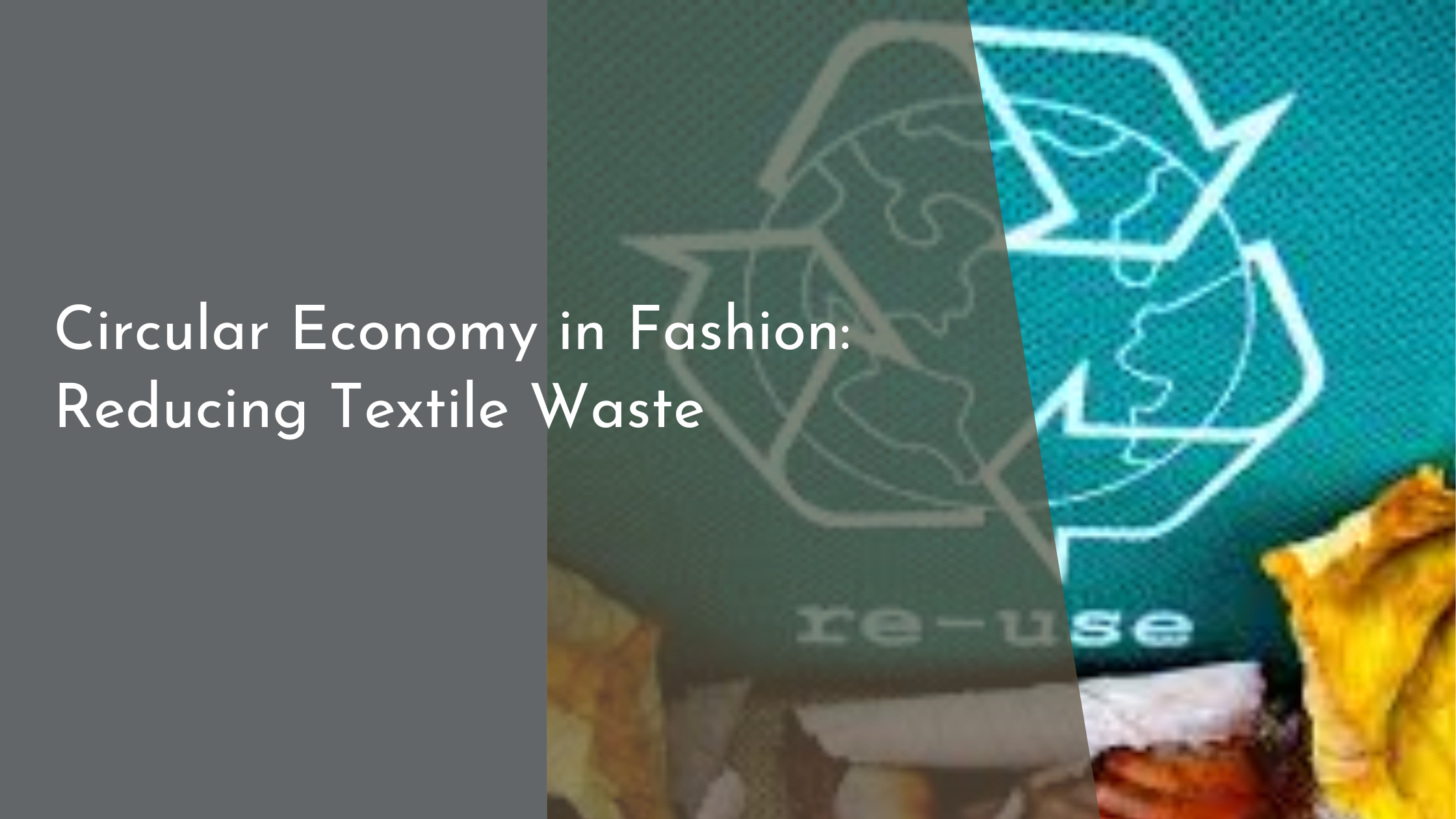Circular Economy in Fashion: Reducing Textile Waste
The fashion industry is undoubtedly one of the most influential sectors globally, shaping trends and dictating styles. However, it’s also notorious for its contribution to environmental degradation, particularly through textile waste. The concept of the circular economy is gaining traction as a solution to this problem, offering a sustainable alternative that emphasizes reuse, recycling, and redesign. In this article, we explore the principles of the circular economy, its potential to reduce textile waste, and how leading fashion brands are embracing this paradigm shift.
Understanding Circular Economy Principles
The circular economy is a regenerative system in which resource input, waste, and emissions are minimized by slowing, closing, and narrowing material and energy loops. This is achieved through long-lasting design, maintenance, repair, reuse, remanufacturing, refurbishing, and recycling. Unlike the traditional linear economy, which follows the ‘take, make, dispose’ model, the circular economy strives to keep products, materials, and resources in use for as long as possible. By doing so, it aims to eliminate waste and create a sustainable cycle of production and consumption.
Applying these principles to the fashion industry means rethinking how clothing is designed, produced, and disposed of. Designers are encouraged to create pieces that are timeless and durable, using materials that can be easily recycled or repurposed. The process also involves developing efficient systems for collecting and recycling worn garments to prevent them from ending up in landfills. Through such practices, the fashion industry can significantly reduce its environmental footprint while promoting sustainable economic growth.
Fashion’s Impact on Textile Waste
The fashion industry is a major contributor to textile waste, with millions of tons of clothing discarded annually. Fast fashion, characterized by cheap, trendy clothing produced rapidly and in mass quantities, is a significant culprit. This model not only encourages overconsumption but also results in garments with shorter life spans, often made from non-recyclable materials. Consequently, the planet is overwhelmed by textile waste, which releases toxins and greenhouse gases as it breaks down in landfills.
The circular economy presents an effective countermeasure to this unsustainable trajectory. By extending the life cycle of garments through reuse, repair, and recycling, textile waste can be dramatically reduced. Programs that encourage customers to return unwanted clothing for recycling or resale, as well as innovations in biodegradable textiles, offer promising solutions. As awareness of the environmental impact of fashion grows, so does the demand for sustainable practices and products.
Innovative Recycling Technologies in Fashion
Advancements in recycling technologies are paving the way for a more sustainable fashion future. Mechanical recycling, one of the oldest methods, involves shredding fabrics and re-spinning them into new yarns. Although effective, this process can shorten fiber lengths, impacting the quality of the recycled material. Chemical recycling offers a more refined approach by breaking down fibers at a molecular level to create new materials, maintaining the quality and integrity of the original fibers.
Emerging technologies such as biofabrication and digital tracking are also revolutionizing the industry. Biofabrication uses microorganisms to create biodegradable textiles, reducing reliance on traditional materials. Meanwhile, digital tracking systems use blockchain technology to track the life cycle of garments, enhancing transparency and accountability in the supply chain. These innovations not only offer solutions for reducing textile waste but also create opportunities for the fashion industry to become more sustainable and efficient.
Brands Leading the Circular Fashion Movement
Several fashion brands are at the forefront of the circular economy movement, setting examples for others to follow. Patagonia, a pioneer in sustainable practices, promotes the “Worn Wear” initiative, encouraging consumers to repair and recycle their outdoor gear. Their commitment to using recycled materials and reducing waste demonstrates the brand’s dedication to circular economy principles. Similarly, H&M’s “Conscious Collection” and garment recycling program aim to close the loop by offering customers incentives to return old clothes for recycling.
Luxury fashion is also embracing circularity, with brands like Stella McCartney leading the charge. Known for her ethical approach, McCartney designs clothes using sustainable materials, ensuring they can be easily recycled or composted. Her advocacy for transparency and innovation in fashion manufacturing is inspiring a new generation of designers and consumers to prioritize sustainability. As more brands adopt circular practices, the industry moves closer to a future where fashion is both beautiful and sustainable.
The transition to a circular economy in fashion is not just a trend but a necessary evolution to mitigate the environmental impact of textile waste. By adopting sustainable practices and embracing innovation, the fashion industry can lead the way in creating a more sustainable world. As consumers, our choices can drive demand for circular fashion, encouraging brands to prioritize sustainability. Together, we can transform the fashion landscape into one where style and sustainability go hand in hand, making a positive difference for the planet and future generations.

